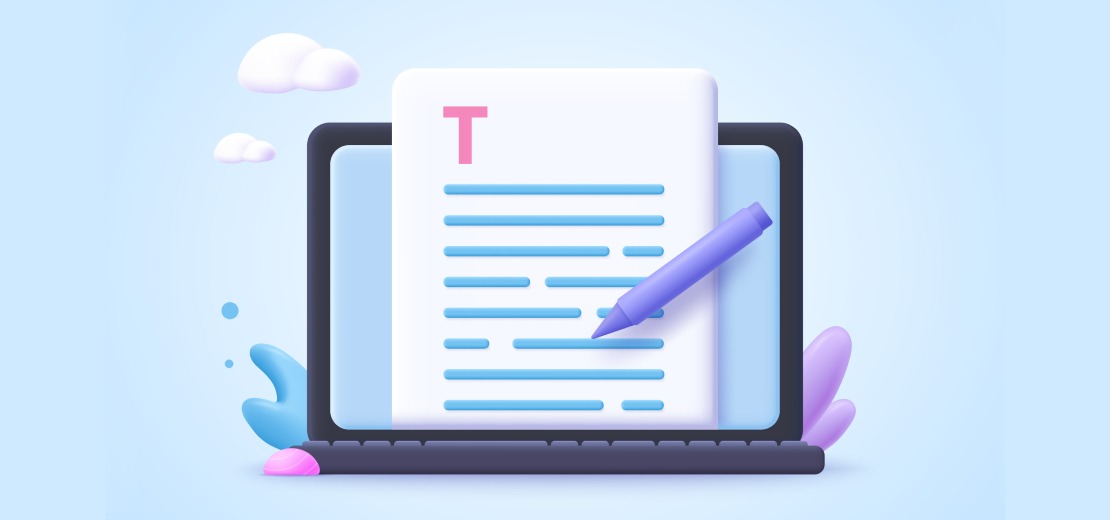Preparatory Work: First Things First
What Are Your Goals?
Any piece of Content Marketing can be seen as a means to take your customer from point A to point B in his buyer’s journey.
For this reason, without clear business goals, this marketing practice becomes a meaningless exercise.
Why do you want to produce content? What do you want to achieve?
Having a clear answer to these questions is the basis for creating great content.
Usually, your main goals will be:
- Attracting New Prospects to your Site
- Building a Strong Relationship with your Audience
- Building your Authority
- Improving Customer’s Loyalty
- Showing the Benefits of your Product/Service
- Understanding your Clients’ Problems
- Melting away Customers’ Hesitation
- Ranking high on search engines
- Testing a new business idea
You can use the same kind of content to achieve several goals at once, but not all of them.
So, don’t be hasty and take your time to focus on your Content Marketing Goals before you start writing.

Know Who You’re Talking to
Here you are, reading a blog post about a topic you are interested in, but the writer doesn’t seem to understand you.
And you feel something like:
- The information is not really what you’ve been looking for
- It’s addressed to Mike the successful entrepreneur, your uncle Joe, your neighbor and a bunch of other people but certainly not you
- It seems written by some kind of blogging cyborg who doesn’t feel emotions, rather than by a real person
- It just doesn’t talk about your real problems
- Is full of cliché and things that you hear for, like, the billionth time
Sounds familiar?
Well, most of the bloggers out there commit these content writing sins simply because they don’t really understand who they’re talking to.
It could seem a bit oversimplified, but that’s the truth.
The more you try to understand those bizarre people who read your blog, the better your writing will be. Because people will engage with your writing only if you address their specific needs and use the right language.
But you can’t figure out what someone really needs if you know him just on the surface, right?
So, to build a stronger connection with your readers, you have to listen (for real) at what they are saying.
Just like in any good relationship.
And, in order to do so, you have to go where they go. Well, at least virtually.
For example, if you’re selling dietary supplements, check those places where people talk about them.
Read their conversations and comments on health or fitness related Facebook groups, subReddits, Instagram and Twitter accounts, blogs, supplement reviews on Amazon and other retail sites.
What are their main interests? What words, expressions, voice, and tone are they using to express themselves? What are their problems (small and big)? How could you solve them? What problems your competitors fail to solve, but you could?
Think about all of this while you dive in their thoughts and don’t be shy to ask people questions or chat a bit with them, whether it’s on your blog or not.
If you’re planning a Content Strategy, after that, you should write down any relevant information on paper, in an Excel spreadsheet or anywhere you want.
Do that, so you’ll have a clear picture of everything important about your ideal customer/reader which you could check at any moment.
This way the understanding of your ideal audience will skyrocket, along with your chances of success.
Sadly, you can’t address everybody’s needs at the same time. So you’ll always find someone who’s not fully interested in what you write.
But, that’s why, to be effective, you have to talk to your one ideal person. A specific person with its very specific needs.
Of course, once you’ve connected with your readers, you don’t have to do an audience research every time you write.

Choose a Topic
Now that you know the people you’re talking to and what you want them to do, you can choose a topic which will engage your readers and serve your business cause.
Here are some ways to do that:
- Check successful bloggers in your niche: simply look at what they are doing and people already appreciate.
- Go to Quora: you can find lots of questions with the relative answers on every topic. If a question related to your niche is popular and you’re able to give a pretty good answer, why don’t you write a blog post about it?
- Go to Buzzsumo: put in a keyword and it will show you the most shared posts about that topic. Find a successful post which you can write better or approach from an original perspective and there you have it, you’ve found your topic.
- Go to Reddit: the so-called “front page of the internet” is full of subreddits (aka communities) related to almost any topic. What makes it so cool? Well, actually many things ?
But, concerning topics, sometimes you can find the hot trends when they are just starting to be trendy. - Read the Comments: people like to express their opinions and talk about their problems. And that’s awesome because blog comments can sometimes enlighten you on a particular problem that you’ve never thought about.
The more you’ll go on writing blog content the more you’ll find that topic ideas can come literally from anywhere.
Create a Great Headline or a Working Title
When you have a general idea for a blog post, you need to come up with a headline or a working title (a temporary headline which you will change when you finish writing the body).
You see, the number one goal of a headline is to make people read the first line of your copy.
To do so, it must grab the reader’s attention making him a promise and then deliver on that promise with your wonderful content.
But, delivering is much easier when you have a clear picture of what you actually have to deliver. So, a headline doesn’t limit your writing as much as it gives you a clear route to follow.
Unfortunately, the headline is often the most neglected part of the writing process.
But, as the legendary adman David Ogilvy said:
So make sure you take your time to create an explosive.
To do so you can try using these tricks:
- Numbers: “10 ways to sell more” is much better of simply “ways to sell more”. Numbers are not always necessary but they work well very often.
- Intriguing adjectives: “10 brutal/hardcore/dirty/overlooked/risky/honest/legitimate/honorable/immediate/ideal ways to sell more” would be even better.
- Unique rationale: avoid the word things at all costs, instead use reasons, ideas, ways, tricks, lessons, principles, facts, secrets and so on and so forth.
- What, Why, When or How: these trigger words are also a good shortcut for a powerful headline. “What legitimate ways can you use to immediately increase sales?” seems not bad.
- Bold promise: “10 overlooked tactics to grow your business almost immediately” for example, is promising me that I’m going to discover tactics that will grow my business really fast. Try to be bold like this but not over-promise, you’ll have to deliver your content.
If you want some headline formulas for inspiration, you can check this post by Sumo.com where you can find 51 of them.
Another thing you may find useful is the CoSchedule’s headline analyzer. It’s a tool that gives a rate to your headline and helps you write a better one.
Not perfect, but a good option for beginners.

Building Your Post
Build Your Outline
Now that you’ve found a topic, you have to create a structure of the main points you’re going to talk about.
For example, if you write a guide on healthy carbohydrates, you can start with something like:
- What are carbohydrates?
- Refined Carbs VS Whole Carbs
- Grocery list of Good Carbs VS Bad Carbs
- Balance with other macros nutrients
- Etc.
When the general structure is pretty much ready you can start adding information to the paragraphs.
Research and Write
You’re a nutrition ace and healthy Carbs have no secrets for you? Awesome!
Start filling the paragraphs with every piece of information you already know.
You’re not a Carbs expert? No worries.
You can start the research process writing down only the information you need. Just make sure that you gain the information from reliable sources only.
The goal here is to create a very huge and very raw draft. A ton of information which has a logical flow, if you look at the big picture (thank you my dear outline).
Write down the data, concepts, personal opinions, anecdotes, stories and anything else you want to put in your blog post.
But don’t worry about how disgusting or dumb your words are. They have to be.
You’ll make them awesome and easy-to-read later.
Go In-Depth
In the last few years, we’ve seen a tendency to create more deep blog posts (thank goodness, may I add).
So now there’s actually a bit of debate about going all-in on long-form blog posts because that’s what search engines like.
You see, all the results on the first page of Google for most competitive keywords go over 2000 words.
But search engines are not the only channel in your arsenal.
Short articles can still get a ton of attention through such traffic sources as email lists, loyal blog audiences, social media, Medium publications etc.
The key here is to avoid being a superficial zombie who just copycats listacles with the same tips and tricks.
You won’t go a long way with that approach.
Go deep into the details and subtleties of the main topic of your blog.
People will appreciate that and follow you back.

Endless Editing
Master the Questions
Be honest…
…did you really like when your teachers lectured you about a subject?
I bet that most of the time you didn’t.
Unless the subject was something very interesting to you.
But, what if they engaged you in a conversation about it? Wasn’t that more stimulating?
Again, I bet it was.
And that’s what you need to do: make your writing more conversational.
Your reader must feel that you’re talking WITH him, NOT AT him.
But, how are you going to do that?
Simply do what I just did: put a question.
This way you switch him from scanner-mode to thinker-mode and help him better understand what you’re talking about.
But, of course, you can’t throw your questions anywhere.
A good writer has to master a smooth use of questions. Put them in the right place and at the right time, in harmony with the conversation flow.
Keep practicing and you’ll get better.
That’s not easy to do, but it’s easy to get. Isn’t it? ?
Other Conversational Techniques
A conversation can’t be made of questions only.
You have to know how to craft well the other part too, right?
Basically, you just have to simplify the overall reading experience. Aka making your post as much easy-to-read as possible.
But there’s a wall that separates you from good conversational marketing. And it’s built on the academic rules you use since the times of high-school.
Writing is about communicating ideas with clarity. It’s about writing for your reader, not for good grades.
And, if breaking the rules helps you deliver your ideas more effectively, than why not do that?
So, use these editing hacks to have a good conversation with your reader:
- Kill the passive voice: rather than “your email will be answered in 24 hours”, “I’ll answer your email within 24 hours”
- Use contractions: he’s, we’ll, they’re etc.
- Break up big blocks of text and long paragraphs: it gives your reader time to breathe and makes your writing scannable.
- Avoid complicated words and jargon: use them only where it’s absolutely necessary.
- Split long sentences in two: you’re not in high-school, you can start sentences with and, because, but etc.
- Read your copy aloud: if it doesn’t feel like a conversation, go on with another editing round.
- Use lots of I and You: people like thinking about themselves more than about you.
- Rhythm: use long and short sentences to slow down or energize your tempo as you need it.
- Use Hemingway to check complicated sentences: it’s a good software but don’t rely on it 100%
- Add pictures that complete and explain your words: sometimes a picture can be better than a thousand words, choose good ones. This way you’ll also give your reader’s mind time to breathe.
- Add some humor: a good laugh can often sell more than endless explanations, but be careful to not overdo it, especially if you’re in B2B. Test different approaches and find a good balance that works for you.
- Encourage action: often we humans already know what to do but go fetal position by default when thinking about it. Your readers are your friends, and like a good friend you should show some empathy and gently push them to take some freaking action.
If you survive the body-copy writing process, the next step is to package it with an introduction and a conclusion.

Introduction
Sometimes introductions can make or break your article.
A good one draws you in. A bad one makes you leave the site, increasing the bounce rate.
People often open several articles at one time. So, if the first paragraph doesn’t seem interesting, they will close the page and go on with another post.
You don’t want this to happen with your content, right?
Of course, you don’t. So follow this simple tips to craft a compelling introduction:
- Keep it short
- Use the word “you” at least 1 time
- Write 1-2 sentences on the problem you’re going to address in the body copy
- Write 1-2 sentences on the benefits your reader will gain from your blog post
And if you want to develop your opening paragraph more thoroughly you can check this introduction guide by Neil Patel.
Sum up Your Content in a Killer Conclusion
The start of your blog post matters. And so does the end.
You helped your readers with pretty wonderful information in your body copy. But, what now?
This way you show your readers the main points to get away with and encourage them to take some actions before they leave.
So, you’ve summed up and now you want your reader to get an immediate action. But which one?
You could ask to:
- sign up for your newsletter to build your list
- leave comments to spark a debate
- link to a related resource on your blog to make them stay on your site
- offer a free consultation or free trial of your product/service
- buy your services/product
- share your content on social media
- sign-up for your webinar
- pretty anything you’d want them to do
But remember that the CTAs you’re going to use must be in tune with other important elements.
Such as the buyer’s journey stage of your ideal reader and the other blog CTAs on the page.
And, whatever CTA you’re going to choose, don’t be too salesy.
Test different approaches, find your balance and try to put the CTA organically in your short Conclusion.
Add Something Sweet for the Eye Balls
A long text can be very hard to digest for some people, that’s why bloggers always add pictures and GIFs.
What’s more, the images can instantly showcase what you’re saying with your words. Thus, helping your readers to quickly get your point. And everyone’s happy, yay!
So break your non-stop word rhythm with some refreshing visuals.
Unless you want to send your reader’s mind K.O.

Final Round
Now that everything is in place, give your mind time to relax and send your blog post in the subconscious.
Read a book, watch a movie, listen to your favorite podcast, teach yourself to juggle, clean your house, think about the purpose of your life on planet earth, or just have a meal and go to sleep.
You absolutely need a fresh view on your work.
After that, read aloud your article. Do that.
And every time you don’t like the flow of your words change them or ruthlessly cut what’s unnecessary. Cut even entire paragraphs if you need. Be cruel.
And when the flow is OK, you can check the grammar.
Do it yourself, outsource it to an editor or use a spellchecking tool like Grammarly.
And that’s it.
Your masterpiece is finally ready.
Conclusion
A good content marketing writer has to a poet and scientist at the same time.
Good content requires a scientific approach, starting from the planning phase.
But you also have to put some creativity in there to make the content more attractive and write it faster.
All these steps are important, but you don’t have to always follow them all.
Nor you have to always follow that specific order since we’re all different and everybody has a personal approach to writing.
Learning to write great content for blogs is a never-ending journey. The more you practice, the more details, perspectives, and approaches you’ll discover.
And that’s why I love it so much! There’s always something interesting around the corner.
Don’t forget to sign up for our newsletter for other pieces of valuable knowledge.
Wanna get paid for blogging and don’t know where to start? We hear you, check out our blog writing services.
And if you’re a business in desperate need for some killer content on your blog, don’t be afraid to get in touch with us at [email protected].
We’ll be happy to make you achieve better results with some savvy and engaging blog content.
In the meantime, say hello in the comments! ?


 (7 votes, average: 4.43 out of 5)
(7 votes, average: 4.43 out of 5)
Excellent article, everything is available and understandable)
Thank you for post! )
I absolutely loved your post! I have a craft blog but I’m no writer. I’m literally going back to school to learn how to write! Very informative.
Knowing who you are talking to genuinely vibes with readers Viktor. Fabulous post buddy.
Very helpful post. I am still learning and this post is so helpful. Thanks!
Very helpful post. So informative. I am still learning and this is so helpful to me. Thanks
Cheryls-Casual-Chatter.Com